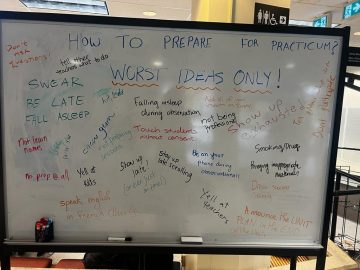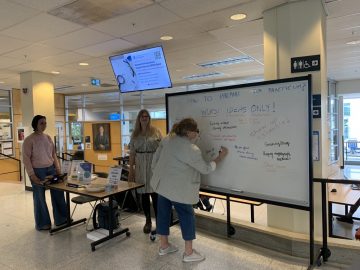Design Thinking is a series of steps that can help people understand the nature of a problem, then consider and test solutions. These steps are part of a cyclical process: the proposed solution may not solve the problem, and then participants will have to go back to earlier steps and work their way through again. Although Design Thinking can be easily embedded in any Applied Design Skills and Technologies (ADST) project, from start to finish, it can be used as a way to think about problem-solving in any subject or classroom.
BC’s newest K-9 curriculum is Applied Design Skills and Technologies. It is interesting to consider the opportunities for teachers to integrate “STEAM” (Science, Technology, Engineering, Arts and Math), Makerspace, computational thinking (including coding) and entrepreneurship in their teaching, and Design Thinking fits perfectly with inquiry-based projects and hand-on learning. To learn more about the ADST curriculum, please visit the related post on our Scarfe Sandbox Blog.
The Steps
To get students thinking about the entire design process for ADST, from beginning to end, teachers can implement a Design Thinking framework. Design Thinking is a human-centered approach to problem-solving and solution creation. It’s used widely by companies to promote innovation and develop new products. There are 5 standard steps:
- Emphasize – try to understand the need
- Define – clarify the problem
- Ideate – generate lots of ideas
- Prototype – build the solution you think might work
- Test – see if the prototype solves the problem
For more information, you can check out Stanford University’s Introduction to Design Thinking: Process Guide
Reverse Ideation
Teachers can also encourage students to try Reverse Ideation, which can help to stimulate creative thinking and get students generating ideas from a fresh approach. In Reverse Ideation, students will try to make the problem worse. This approach can take the pressure off of students from having to find the perfect solution and can get ideas flowing (it can also be a fun way to break the ice and get students talking and connecting with each other). Once the worst ideas are out, that can free students to think about possible solutions, using the worst ideas as a starting point. Check out this blog post for an example of what Reverse Ideation can look like in practice.

Reverse Ideation in Action! “How to prepare for practicum: worst ideas only”
At a recent Scarfe Foyer session, teacher candidates had the chance to try out Reverse Ideation to help them prepare for their upcoming short practicum.
We set up a white board with our question: “How to Prepare for Practicum? Worst Ideas Only!” We provided white board markers, as well as post-it notes, and asked TC’s to generate ideas. This is a set-up that’s easily replicable in a classroom using whatever materials are on hand, such as chart paper, white/black boards, post-it notes on desks, etc. The unconventional approach to this topic, preparing for practicum, generated a lot of interest and discussion.

Greta, Nashwa and Lindsay host a Scarfe Foyer Session.
Edited by Peer Mentor Lindsay Cunningham (Ph.D. student, EDCP), October 2023


